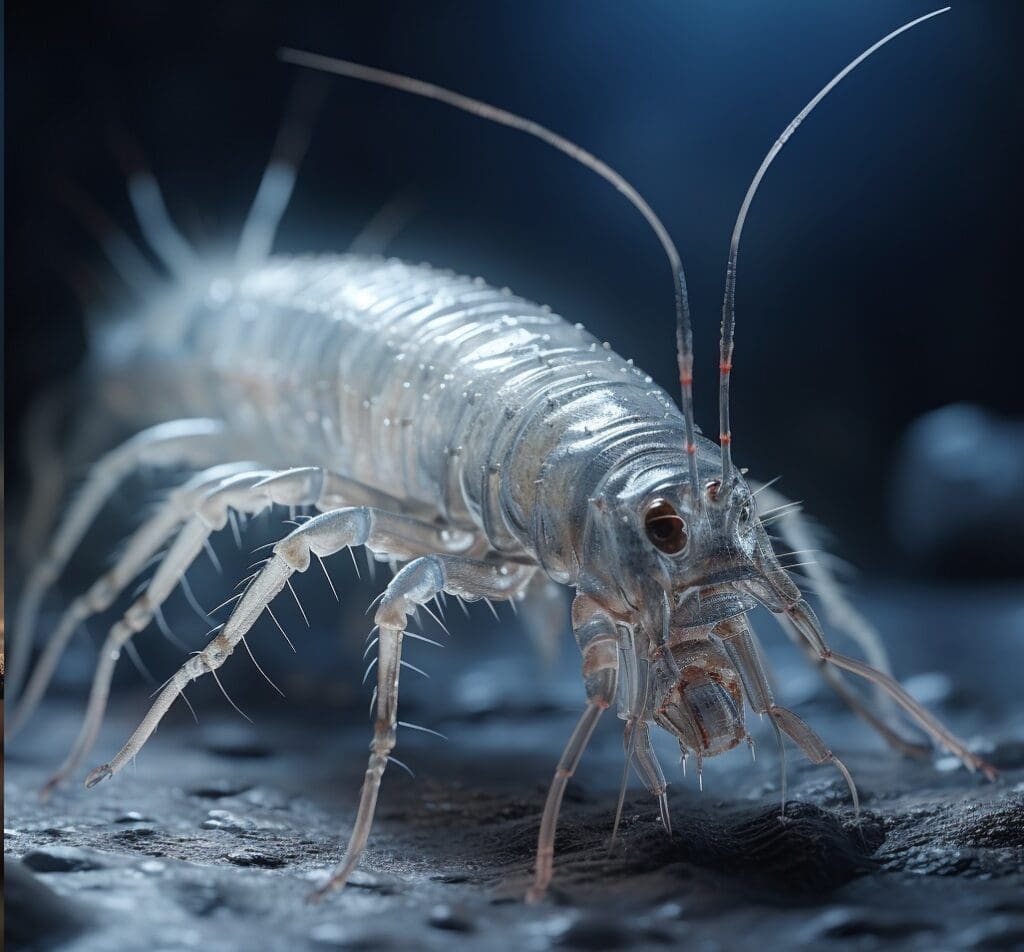
Silverfish Prevention & Control
Springtime in the South brings more than just blooming flowers and warmer weather—it's also peak season for silverfish. These small, wingless insects are notorious for invading homes and becoming unwelcome guests. You might find them lurking in your pantry or scuttling across your bathroom floor, but what exactly are these silvery pests?
Silverfish can be a real headache for homeowners, munching on anything from book bindings to wallpaper. While they're not harmful to you, they can wreak havoc on your belongings. You've got questions, and you're not alone in your curiosity—or your frustration. Let's dive into the most frequently asked questions about silverfish in southern states and uncover what you can do about these persistent pests.
FAQs About Silverfish in Southern States
Dealing with silverfish in the South can leave you with a lot of questions. Here's what you need to know about these pesky critters.
Why do silverfish invade homes? Silverfish seek out environments that satisfy their need for starches and sugars. They’re attracted by common household materials such as wallpaper paste, glue, and book bindings. These insects also crave humidity, which makes your home an ideal habitat, especially during the spring when moisture levels are high.
Are silverfish signs of a dirty home? Not necessarily. While cleanliness can deter their presence, silverfish are opportunistic and can find the resources they need to survive even in tidy environments. It’s more about controlling moisture and eliminating their food sources to keep them at bay.
Can silverfish damage my belongings? Yes, they can cause significant damage. Silverfish feed on a variety of materials, including:
- Wallpaper glue
- Starch in clothing
- Book bindings
- Linen
- Paper
This feeding habit can result in the degradation of your possessions, particularly textiles and paper goods.
How can I prevent a silverfish infestation? Prevention is key. Reducing humidity with dehumidifiers and improving ventilation can help make your home less attractive to silverfish. Regularly vacuuming and the prompt cleaning of spills also reduce their food sources.
What should I do if I have an infestation? If you’ve spotted more than the occasional silverfish, it might be time to consider professional assistance. Companies specializing in pest management can provide targeted treatments to not only help eradicate current populations but also to keep your home pest-free in the long term.
Remember, while silverfish aren't harmful to humans, addressing an infestation promptly can save your valuable belongings from damage. Keeping your home dry, clean, and free from clutter goes a long way in deterring silverfish and maintaining a comfortable living space.
What are Silverfish?
Appearance and Characteristics of Silverfish
When you're dealing with pests in your home, it's crucial to identify them correctly to tailor your approach to extermination. Silverfish are small, wingless insects with a unique appearance. They range from 1/2 to 3/4 inches in length, and their bodies are flat, which allows them to expertly hide in tiny crevices throughout your home. These pests are easily identified by their metallic, steely gray color highlighted with dull gray-silver scales that give them a shimmering appearance, hence the name silverfish.
Here's a quick breakdown of their physical traits:
- Actual Size: ½ to ¾ inches
- Color: White to brown-gray or bluish-silver
- Body: Flattened, metallic, covered with scales
- Legs: 6
- Antennae: Yes
- Wings: No
- Tail: 3 long bristles
You'll typically find silverfish in moist or humid areas like basements and bathrooms, where they can find plenty of damp environments and cellulose materials to feed on. Their evasive speed and nocturnal nature make them a surprising discovery during night-time bathroom trips.
Lifecycle of Silverfish
Understanding a silverfish's lifecycle is vital to controlling and preventing infestations. From the moment a silverfish egg hatches, it embarks on a life that can span anywhere from two to eight years. Each female is capable of laying approximately 100 eggs throughout her life, depositing them in small clusters or individually around your home.
Here's a glance at the key aspects of their development:
| Stage | Duration | Description |
|---|---|---|
| Egg | 3 to 6 weeks to hatch | Laid singly or in small groups, often in moist, hidden areas |
| Nymph (Juvenile) | 4 to 6 weeks to maturity | Juveniles are whiter and smaller but resemble adults |
| Adult | 2 to 8 years | Reach full size and begin reproductive cycle |
These insects are hardy, and their nymphs mirror adults in form, just on a smaller scale, taking merely four to six weeks to darken and mature. Given their ability to live several years, a few unnoticed insects can rapidly expand into a serious pest issue. As juveniles take on the familiar gray or silver hue, they continue the life cycle, possibly within the hidden corners of your residence.
Silverfish have adapted to thrive in various conditions, which means proactive measures are necessary to keep them at bay. Remember, spotting a silverfish often indicates there are more lurking nearby. Stay vigilant for signs of these persistent pests, particularly if you're living in the southern states where the climate can be an ideal breeding ground.
Why are Silverfish Common in Southern States?
Climate and Environment
Southern states offer the perfect climate for silverfish to thrive. The warm, humid conditions that characterize much of the region, particularly in South Carolina, Florida, and Southern California, create an environment that's ideal for these pests. Silverfish prefer areas of excess moisture and high levels of humidity to survive, both of which are abundant due to frequent rain and high average temperatures. These conditions are akin to a silverfish paradise, especially during the wetter, more humid winter months in Southern California and the consistently humid summer climate of Northern South Carolina and the Charlotte area.
Your home could become a haven for silverfish if it mimics the outdoor conditions they love. Spaces in your home that replicate these moist and dark conditions—like bathrooms, kitchens, and attics—can attract silverfish indoors. Aside from natural weather patterns, everyday household activities like showering, cooking, and using air conditioners contribute to indoor humidity levels, creating a welcoming environment for these pests.
Food Sources for Silverfish
A key to understanding silverfish infestations involves recognizing their diet and what they're drawn to within your home. Silverfish are not picky eaters; they'll feed on an array of materials found commonly throughout houses. They have a particular affinity for starchy materials such as paper, wood, and linens. Here's where they might be foraging:
- Paper: Silverfish often target items such as books and magazines, preferring materials with a starchy coating or glossy finish.
- Linens: Any starched linens become prime targets. You might find damage to curtains, furniture coverings, and even clothing made of silk or cotton.
Because of the accessible food sources in your home combined with the optimal living conditions, silverfish might not only visit—they might decide to stay. To combat this, it's wise to reduce food sources by keeping food sealed in airtight containers and maintaining cleanliness. Vacuum carpets, floors, and furniture regularly to eliminate any potential food debris that could sustain these pests. Remember, a silverfish infestation may indicate you're unintentionally providing a feast for these unwelcome guests.
How to Identify a Silverfish Infestation?
When you suspect a silverfish infestation, knowing the signs is crucial. These crafty critters are masters of stealth, operating under the cover of darkness in your home. You might not catch them in the act, but they leave tell-tale evidence of their presence. Watch for these indicators that silverfish have taken up residence:
- Small yellow stains on fabrics or clothing
- Tiny black pellets, which are silverfish feces, scattered around your home
- Holes or notches on the edges of paper, wallpaper, or in your clothing
- Accumulations of silverfish scales or feces on infested materials
Beyond these signs, you should be aware that your attic could be a hidden sanctuary for silverfish. A peek underneath the insulation might reveal them lurking in the shadows.
If you suspect silverfish, check places where these items are stored:
- Cardboard boxes
- Newspapers
- Potted plants
- Items made of wood
Silverfish often hitch a ride into your home via these objects, especially if they've been stored outdoors. Your best bet? Transition to silverfish-resistant storage. Plastic and aluminum containers are less inviting to these pests than cardboard.
Outdoors, consider reshaping your home's immediate environment. Replace mulch with stones or pebbles to eliminate the moist conditions silverfish love. Not only does this help to drain water more effectively, but it also deprives silverfish of their favorite hiding spots.
At night, silverfish come out to feed and breed. So it's during the day that you'll often find evidence of their nighttime activities. Regular inspection of these areas can help you catch an infestation early on, making it easier to control. Keep your pantry and cupboards tidy, and securely seal any food items, to discourage silverfish from making a meal of your groceries.
Remember, silverfish molt as they grow, leaving behind skins that gather dust and potentially trigger allergies. Regular cleaning can help you spot these signs and keep potential allergens at bay.
How to Prevent Silverfish Infestations in Southern States?
Maintaining a Clean and Dry Environment
You'll want to focus on creating an inhospitable environment for silverfish—the primary tactic in your defense. Start by reducing excess humidity in your home; this can't be stressed enough. Utilize fans or dehumidifiers to draw out the dampness, particularly from notoriously moist areas like your kitchen, bathroom, and basement. Ensure these spaces are well-ventilated. Routine checks to verify that ventilation systems are operating correctly could save you from a full-blown invasion.
Your cleanliness regimen must include minimizing clutter, especially items like newspapers, old books, and cardboard that act as perfect hideaways and food sources for these critters. Given their penchant for sugar and starches, it’s vital to keep food messes to a minimum and store pantry staples in metal or plastic containers that are sealed tight.
Sealing Cracks and Openings
Silverfish are adept at finding entry points into your home. Your job is to seal the deal—literally. Inspect your home's foundation, walls, and around windows for any gaps. Seal any cracks or crevices with caulking to deny these pests the entry they seek. Pay close attention to utility lines and pipes as well; these are often overlooked as pathways for insects.
It's as important to secure the inside of your home as it is the outside. Patch up any internal cracks and gaps. Remember, silverfish lay their eggs in these spaces, so by sealing them, you'll prevent the next generation from taking up residence.
Using Natural Repellents
In your arsenal against silverfish, natural repellents can be a secret weapon. Diatomaceous earth, boric acid, and amorphous silica gel are all effective deterrents that you can apply to areas you don't frequently visit, like attics and crawl spaces. Just ensure they stay dry, or else their efficacy drops significantly.
Consider incorporating items with repellent properties into your décor, such as cedar shavings or sachets with fragrances that silverfish find off-putting like cinnamon, cloves, and lavender. By strategically placing these around your home, you can create a barrier that smells great for you but is a no-go zone for these pests.
Regularly decluttering, cleaning, and maintenance are your best tools for keeping silverfish at bay. Reducing moisture levels and food access while blocking entry points makes your home far less attractive to silverfish, helping you avoid infestations before they begin.
How to Get Rid of Silverfish in Southern States?
Removing Clutter and Food Sources
One of the most effective strategies to prevent silverfish is to eliminate clutter and potential food sources in your home. These pests are attracted to carbohydrates and proteins commonly found around the house. Common food sources for silverfish include:
- Book bindings
- Paper and cardboard boxes
- Rolled oats
- Pet food
Since silverfish can thrive on these items, you'll want to minimize clutter where these insects can hide and breed. Store items such as books, magazines, and files away from moist areas, ideally in dry, sealed containers. Be diligent about cleaning up spills, especially from sugary or starchy foods, and make sure to secure food containers to reduce the chances of an infestation.
Using Commercial Insecticides
If the infestation persists, you may consider using commercial insecticides. Look for products specifically designed to target and eradicate silverfish. Read labels carefully and follow application instructions to ensure effectiveness while keeping your family and pets safe.
Insecticides can come in various forms, including:
- Baits
- Sprays
- Powder formulations such as diatomaceous earth
Apply these treatments to common silverfish entry points and hiding places, like along baseboards, in closet corners, under sinks, and around plumbing fixtures. Ensure you treat any cracks and crevices where these pests might enter or nest.
Calling Professional Exterminators
Sometimes, despite your best efforts, silverfish may continue to be a nuisance. In these cases, professional exterminators are your most reliable option. They have access to more powerful tools and treatments that can effectively handle larger infestations. Professionals are trained to identify silverfish habitats and can apply the most effective methods for removal and prevention.
By enlisting professional help, you'll benefit from:
- Expert identification of pest problem areas
- Comprehensive treatment plans tailored to your home
- Long-term prevention strategies
Remember, recurrent or large silverfish colonies often require expertise beyond DIY solutions, making professional pest control services a valuable investment for protecting your home.
Conclusion
Tackling silverfish in your Southern home requires a multifaceted approach. Remember, reducing humidity and decluttering are key steps, but you may need to reach for commercial solutions or professional help for stubborn cases. Stay vigilant and proactive to protect your belongings from these persistent pests. With the right strategies, you can keep your home silverfish-free.
Frequently Asked Questions
Where are silverfish most common in the US?
Silverfish thrive in warm, humid environments, with the Gray Silverfish predominantly found in areas ranging from the Midwest to California and South.
What states are silverfish found?
Silverfish are present throughout the United States, particularly favoring damp and humid areas within homes, such as bathrooms, basements, and attics.
Do silverfish ever go away?
Silverfish require moist conditions; fixing any plumbing leaks or drips can help eliminate their habitat, possibly leading to a natural reduction in their numbers.
How do you get rid of silverfish permanently?
Permanent removal of silverfish involves sealing food containers, reducing humidity levels, decluttering living spaces, applying diatomaceous earth, and setting up traps.
What do silverfish hate?
Silverfish are repelled by various scents including cedar, citrus oils (orange, lemon), peppermint, rosemary, bay leaf, clove, cinnamon, and lavender. These can be used through essential oils in affected areas.
We hope you enjoy these informational articles. If you'd like to learn more about our eco-friendly pest control services, call (844) 955-2447.
Read More
Your Path to a Pest-Free Home or Business
Romex Pest Control
We are committed to protecting you, your children, and your pets with our eco-friendly, child-friendly, and pet-friendly guaranteed pest control solutions.
Romex Pest Control is fully insured and licensed in Texas, Oklahoma, Louisiana, and Mississippi.
Service Areas:
Hours
M-F 8 am–5 pm
Sat 8 am–2 pm
Sun Closed
Established 2016 © Copyright 2025 Romex Pest Control










